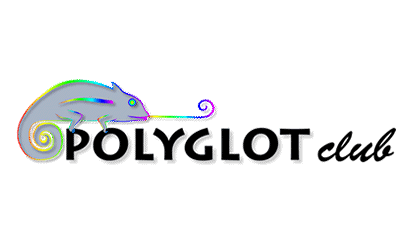Help

The English version of this article was written by Kevin Morehouse, language coach, teacher and member of the LucaLampariello.com team.
Welcome to an amazing adventure! Though the Korean peninsula is a small one, it is home to excellent cuisine, an amazing culture, fascinating history, and more television shows, music videos, and pop songs than you've probably ever encountered in your life (seriously!).
Before you start—or maybe continue—your Korean studies, though, I want to share with you a few common mistakes that I've seen many Korean learners make. It is my hope that by knowing and avoiding these mistakes, your journey to Korean fluency will be much smoother and much more enjoyable.
시작하겠습니다! (Let's begin!)
1. Relying on Romanization
When most people start learning Korean, they see all the strange and unusual characters and immediately get anxious.
With Korean, using romanization can feel like an easy way to get used to the language before you have to face learning the alphabet, which can be intimidating if you've never done that before.
Why?
There are multiple different romanization standards which are inconsistently used in materials for Korean learners and non-Korean speakers.
2. Putting off Pronunciation
Korean pronunciation is really hard. Korean has many sounds that are similar to English sounds, but not quite. For the unfamiliar, Korean can be said to have three "ch-like" sounds, but no "ch", three "p-like" sounds, but no "p", three "t-like" sounds, but no "t", three "k-like" sounds, but no "k", and two "s-like" sounds, but no "s".
Because of all this, you may feel like you can just power through and ignore Korean pronunciation by simply crossing your fingers and hoping people understand you.
3. Prioritizing Handwriting over Typing

Korean characters, like their Chinese and Japanese are written with a specific stroke order.
This means that to write the characters by hand, you need to follow a sequence of predetermined steps that determine which lines you draw in what order, and in what direction.
For starters, if you're a learner who lives outside of Korea (and/or doesn't interact with Koreans much in person), you'll very rarely (if ever) need to write out Korean by hand. Anecdotally, I've been learning Korean for nearly three years, and I can't remember the last time I had to write something by hand in Korean. It's a skill I'm glad to have, but I don't really use it with any regularity.
In both of these environments, it is extremely important to be able to type well, so that you can communicate with your partners quickly and clearly.
4. Ignoring Particles
Korean grammar can get pretty complicated at the intermediate and advanced levels, but there are a few grammar points that stump even the earliest of beginners.
Chief among these are the particles, which are short verbal "tags" added to the ends of words to denote the function of that particular word in the sentence.
- Subject-marking particles
- Topic-marking particles
- Object-marking particles
1. They are the most commonly used particles in Korean
2. They are the most commonly omitted particles in spoken language.
That's right! Even though you'll see these particles used all over in Korean writing, Korean speakers tend not to use them when speaking casually.
"Whew", you might be thinking, "if Koreans don't use these particles, then I don't have to bother learning them, right?"
Wrong.
There's a saying that goes something like this:
"You have to know the rules before you can break them"
You'll lack awareness of the ways native speakers can and do use particles to convey meaning and nuance in their speech. Not to mention, of course, that you won’t be able to use that meaning and nuance in your own speech, either.
5. Overusing Pronouns

A Korean-speaking friend of mine once told me that you can always tell when a Korean text has been written by non-Korean, as opposed to an actual Korean speaker.
There are a number of reasons for this, but the main one is simple:
Let's use a simple text in English to demonstrate this point.
Even in this short passage, do you notice one word that's used a lot more than others?
The pronoun
Korean, on the other hand, does quite well without use of many pronouns at all.
Here's the above text again, this time in Korean:
안녕하세요, 저는 케빈입니다. 미국 사람입니다. 언어를 배우는 것을 좋아합니다. 요즘에 한국어 배우고 있습니다.
Time to Learn Korean
The journey to Korean proficiency is not a quick one. There will be lots of ups and downs, mistakes and small victories.
However, today it is my hope that the five mistakes I've discussed here are ones that you won't make, at least not from now on.
1. Avoid romanization
2. Practice your pronunciation
3. Start (or continue) learning how to type
4. Learn particles, and use them when appropriate
5. Drop pronouns more often
Take these tips to heart, and you'll have a great head start on the road to speaking Korean fluency!
Related topics:
Comments
 3
3
 1
1
 1
All
1
All
 | cdrhelp5 weeks ago Greetings to the engineers in Nigeria! Are you concerned that the costs associated with CDR writing assistance may limit your access to professional support, potentially impacting the quality of your reports? Nevertheless, considering the CDR Writing Services in Nigeria for Engineers Australia through AustraliaCDRHelp.com could prove beneficial, as they provide cost-effective and tailored solutions for Engineers Australia. |
 English
English | hellfireOctober 2023 Starting to learn Korean is an exciting journey, but it’s not without its challenges. While it’s important to focus on language acquisition, we mustn’t overlook the tools and resources we use to support our learning. Reliable internet connectivity plays a crucial role in accessing online courses and language materials. If you ever encounter issues with your AT&T router, email, or face login problems, remember that assistance is just a click away. Explore https://www.contactcallsupport.com/att-router-support/ for guidance on router-related concerns, https://www.contactcallsupport.com/att-email-support/ to address email-related issues, and https://www.contactcallsupport.com/att-mail-login/ for assistance with login problems. By ensuring a smooth online experience, you can avoid some of the common mistakes when starting to learn Korean and make your language learning journey more enjoyable and effective. |
 English
English | LacyBogisichFebruary 2023 One of the most common mistakes people make when starting to learn Korean is not setting realistic goals. It is important to set realistic expectations for how much you can learn and how quickly you can learn it. It is also important to understand the basics of the language before diving in. Taking the time to learn the fundamentals, such as pronunciation and grammar, will help you make progress in the language more quickly and easily. Another mistake people make when learning Korean is not taking advantage of all the resources available. There are many free online Korean language learning resources that can help you learn the language. Additionally, there are many Korean learning apps and books available that can help you make progress in the language. Taking advantage of these resources can make learning Korean much easier. Finally, it is important to practice speaking Korean as much as possible. Even if you are only starting to learn Korean, it is important to put yourself in situations where you can practice using the language. This can include talking to native Korean speakers, joining a language exchange, or even downloading Korean language learning apps. Practicing speaking Korean will help you make much more rapid progress in the language https://corefy.com/blog/payment-routing-101-the-essentials-you-must-know. |
 English
English













































 Source: Kevin Morehouse (LucaLampariello.com)
Source: Kevin Morehouse (LucaLampariello.com)